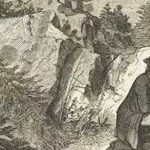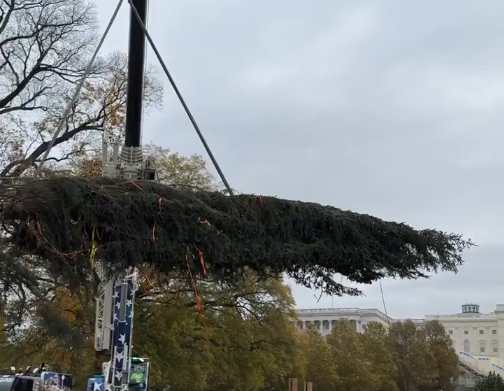|
|
|

Once again, Christmas is upon us. The season, full with gift giving and well wishes, is the annual favorite of millions and millions of people on planet earth.
Although the annual winter celebration has been with the world for a very, very long time, modern adherents to the celebration would probably be not so much at home with the holiday as it was celebrated in its earliest times. Many things have been added through the years to make it the celebration we know today.
The precursor to Christmas celebrations was in practice long before the birth of Jesus. The observance of the December solstice is believed to have been celebrated as early as 12,000 years ago in the Neolithic period and before, and continued through the earliest of known civilizations.
In the Roman Empire, the celebration of Saturnalia took place each December from the 17th until the 25th of the month. During that holiday celebration by the Romans, the courts would close and property laws were suspended. A “Lord of Misrule” was chosen from the enemies of the Roman people and each community would choose their own victim. That victim was forced to feast and take part in other physical pleasures throughout the holiday, but then, on the last day, December 25th, the chosen victim’s merry-making came to an abrupt end, and they were brutally put to death. The Romans thought that this final ritual of the celebration would destroy the forces of darkness, and bring light back to the world.
As Christianity took hold in the Roman Empire, and then finally became the official Roman religion, Christians, in an attempt to bring pagans into the church, converted many by promising them that they could continue these winter rituals as Christians. The celebration would continue with widespread public intoxication and the tradition of wandering naked through the streets and going to houses merrily singing songs.
Christians would ensure widespread adherence to the birth of Jesus celebration by tying his birth to the last day of the Saturnalia celebrations. Until that time, there was no agreement as to the date or even the year of Jesus‘s birth. Christians celebrated the first Christ’s Mass on December 25th, 336 after Emperor Constantine declared Christianity to be the official Roman religion.
Norse mid-winter celebrations were brought into the Christmas tradition in much the same way as earlier pagan celebrations in Europe.
Christmas trees had their earliest roots in those Norse mid-winter celebrations and would too become a part of the Christmas celebration.
Evergreen trees or boughs would be brought into Norse homes during their winter solstice observances and decorated, while Yule logs would burn in the fireplaces to ward off the darkness. Norse Mistletoe traditions also found their way into Christmas at this same time.
While Old St. Nick plays an important role in Christmas as we celebrate it today, Saint Nicholas played a role separate from Christmas in the celebration’s earliest years. St. Nicholas Day was celebrated with gift giving on the annual observance of that saint’s death that occurred on December 6th of 343 AD. As this separate Christian tradition advanced further and further north through Europe, St Nicholas’s flowing robes would transform into robes of fur. Through the years as the celebration made its way to the northern reaches of Europe, St Nicholas melded with Norse traditions, and their god Odin, and St Nicholas took on the power of flight to aid in his gift-giving.
In time, the gift-giving celebration of St. Nicholas, early in the month of December, was moved later into the month and into the Christmas tradition as well. This was especially true in England, where Saint Nicholas Day, in time, altogether ceased to be observed, and the image of Father Christmas emerged in his place.
As the centuries passed, Christmas would fall out of favor in England and be outright banned by law by 1645 by Oliver Cromwell and his puritan forces. Puritans, in Parliament, abolished the holiday for 15 years. That banishment of the holiday would reach beyond England’s borders.
Puritan settlers in Boston went a step further, outlawing Christmas celebrations entirely in 1659, making any type of feasting and shirking of duties or speaking the name of Saint Nicholas an offense. Offenders were levied a five-shilling fine. Christmas wouldn’t be celebrated again in Boston until 1681.
Celebrations of Christmas occurred in other, southern portions of the new colonies for a time, however.
But, with the coming of the revolution, Christmas would again fade into the background as the colonies set to work winning their independence.
It wouldn’t be until the early decades of the 1800s that Christmas would slowly reemerge in in popularity in the United States.
Then, in 1823, “Twas the Night before Christmas” was published in the New York Sentinel to enormous success. The poet, Clement Clark Moore, transformed the Dutch version of Saint Nicholas, who before then was depicted as a gaunt saint, and Odin, who rode an eight-legged horse, into the jolly dimpled elf.
That jolly elf was the beginnings of the modern pipe-smoking Santa we know today who delivers gifts over the globe in a sleigh drawn by eight flying reindeer.
Christmas trees were not popular in the New World until the mid-1800s, until then, Christmas trees were not a staple of the winter celebration beyond the borders of Germany and northern Europe. But then, in the 1840s, Queen Victoria persuaded her new husband, Prince Albert of Germany, to observe his country’s tradition of decorating an Evergreen tree.
While the royal family had a Christmas tree included in their celebrations for years prior, it was Prince Albert, and his gifts of trees to army barracks and schools that drew the attention of the press, and woodcut images of the royal tree at Osborne House were printed in the Illustrated London News. Following that publication, decorated Christmas trees would become the rage of England. The elite would compete for the most ornate tree complete with silver tinsel and delicate blown glass ornaments.
Across the ocean, that woodcut would be published in Godey’s Lady’s Book in Philadelphia in 1850, and the new custom was introduced to America with the same enthusiastic effect, and Christmas trees soon took on a huge role in American Christmas celebrations.
It would be in New York again, where Jolly old Saint Nick would become even more recognizable as the Santa Claus of today when Thomas Nast would create more than 2,200 illustrations for the Harper’s Weekly of the jolly elf from 1862 until 1886. It was during this time that Santa got his home at the North Pole, or later, if you are Alaskan, North Pole, Alaska.
Old St Nick also gained his list of naughty or nice, his workshop full of elves. and grew from an elf to the robust size we know him to be today through the ribald tales of Nast. Printed Christmas Cards, Christmas crackers, and traditional turkey dinners were also introduced during this period
[content id=”79272″]
But up until that time Santa was still without the traditional outfit and facial features that are so recognizable today. That changed in 1931, when Coca-Cola commissioned commercial artist Haddon Sundblom to draw a Cola drinking Santa. Sundblom used his friend Lou Prentice as his model because of his cheerful, chubby face.
Coca-Cola insisted that Santa wear the fur-lined bright Coca-Cola-red outfit, and it’s that outfit we traditionally see on Santa today.
Through the years, America has made the centuries-long celebration our own. We have omitted “Hot Cockles” a game where a person is blind-folded and hit with a stick, at which time, that person had to guess who hit them. Gone too, is Frumenty, a pudding made with cracked wheat boiled in milk or water.
But, we have added candy canes, which were first invented in Germany to keep choir boys quiet during the long Christ Masses. When we added bright stripes and flavoring to those canes, we succeeded in making them our own.
Americans inspired by the Hansel and Gretel tale created gingerbread houses and added them to the growing holiday tradition. We have also added electric tree lights invented in 1920 by Edward Johnson, an employee of Thomas Edison to our trees. Our trees grew in stature as well. With their beginnings as tabletop size decorations, they have grown through the years, at times, reaching the ceiling, and even many times beyond.
Christmas traditions, both great and small are added all over America each season as millions gather to celebrate the Yuletide season with gifts and feasts at family get-togethers. Each and every one of us adds a little something to the holiday, making it more our own as we go about our holiday traditions each and every year.
Adaptations through time have served to make Christmas the biggest of celebrations in America, as well as many other places in the world. As we celebrate generosity, gift giving, good cheer, and the special moments that the gathering of families brings, we continue the centuries-long tradition of winter observance and celebration.
Once again, as the season is upon us, the Alaska Native News would like to wish all of our readers wherever they are, a Merry Christmas and a Happy New Year.
Please celebrate safely in these difficult times and in good spirits.
|
|
|






